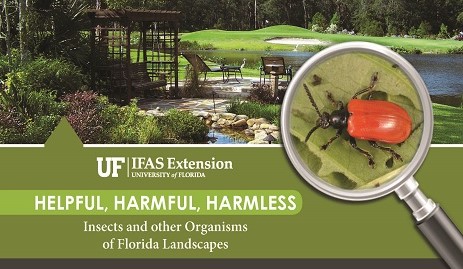
by Danielle S. Williams | Mar 13, 2025
When most people think of insects, they think of the bad ones, but not all insects are bad! Insects are labeled as bad or ‘pests’ when they start causing harm to people or the things we care about such as plants, animals, and buildings but most insects are GOOD! In fact, of the millions of insect species found throughout the world, less than 2% are actually considered pests. There are several different ways insects can be beneficial in your garden or landscape:
- They prey on pest insects. Many species of insects eat pest insects! For example, lady beetles (ladybugs) and lacewings eat pest insects like aphids, mealybugs and whiteflies. They can help keep insect populations in balance. It’s important to recognize some of the beneficial insect species (and their different life cycle stages) that you might find in your garden. The UF/IFAS Extension bookstore has a great identification guide: Helpful, Harmful, Harmless?

- They parasitize pest insects. Some species of good insects live in or on pest insects. For example, parasitoid wasps lay their eggs into pest insects and when the wasp eggs hatch, they feed on the pest species. Here’s a really great video to show the process: Parasitic Wasps – National Geographic
- They pollinate. Many of the good insects like native bees, honeybees, butterflies and moths help us pollinate our gardens. They transfer pollen grains from flower to flower that help plants bear fruit.
- They decompose. Insects also help aerate our soils by breaking down dead material and recycling nutrients. Dung beetles are a great example! They bury and consume dung which improves soil quality.
One of the best things you can do for your garden is learn to differentiate pest insect species from beneficial ones! Just because you see an insect on your plant, doesn’t necessarily mean it is causing harm. If you see an insect, are you seeing injury to the plant? If so, what type of injury (defoliation, yellowing, leaf curling)? If you aren’t seeing injury, then you may not have anything to worry about. If you find something you’re unsure of, you can always reach out to your local UF/IFAS Extension Agent!
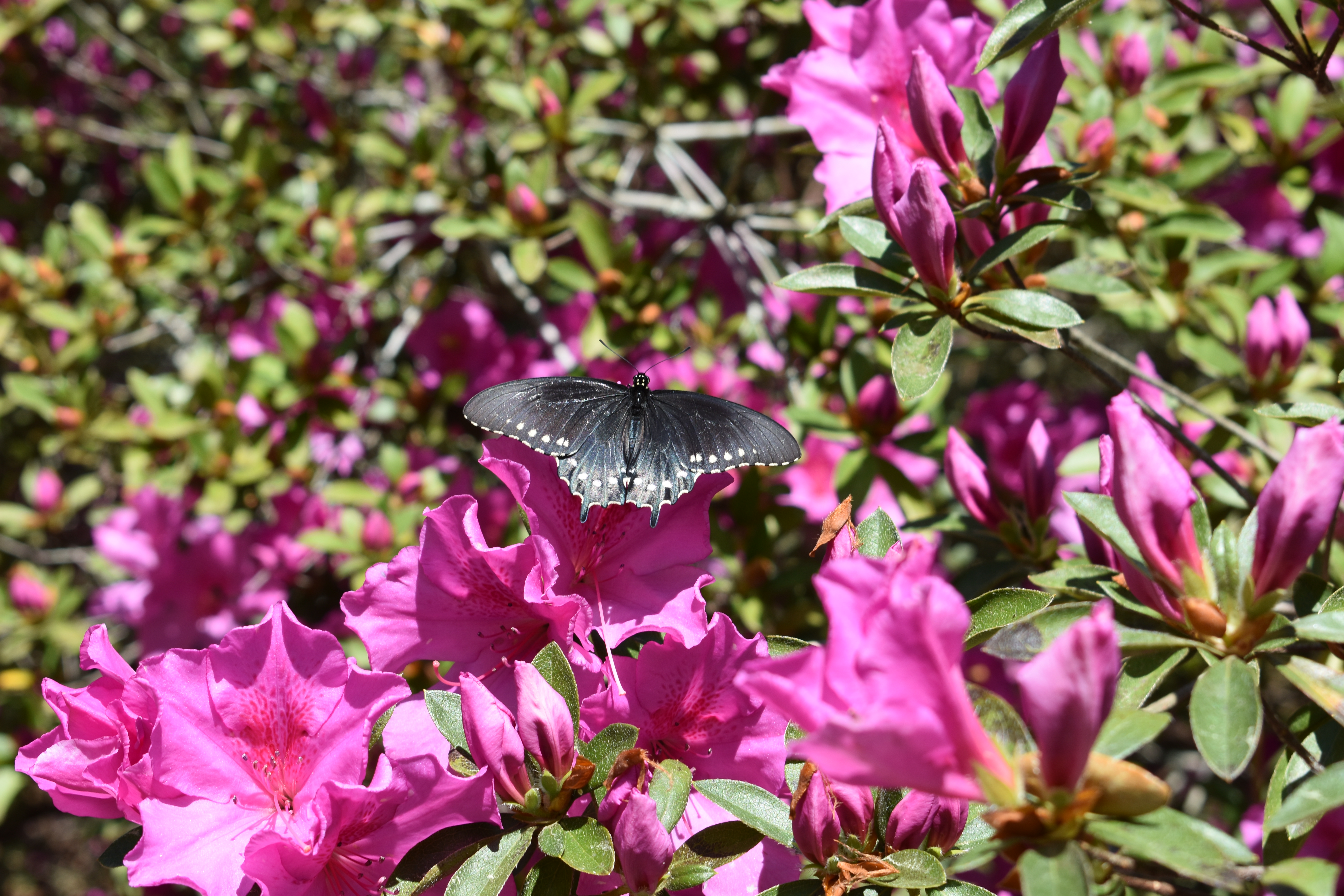
Pipevine swallowtail on Azalea.
Attracting and encouraging beneficial insects can really help your garden and landscape thrive. The best way to attract beneficial insects to your garden or landscape is to have lots of plant diversity. A mix of trees, shrubs, annual and perennial flowers in the landscape is best. Trees and shrubs will provide shelter for insects to overwinter, and flowers provide pollen and nectar.
Flowers in the carrot family (Apiaceae) such as caraway, coriander, cilantro, dill and fennel are attractive for parasitic wasps. Flowers in the Aster family (Asteraceae) such as blanketflower, coneflower, coreopsis, cosmos and goldenrod are attractive for larger predators like lady beetles and soldier beetles. These can be incorporated into the garden or flower beds.
For more information on attracting beneficial insects to your landscape, contact your local UF/IFAS Extension Agent!
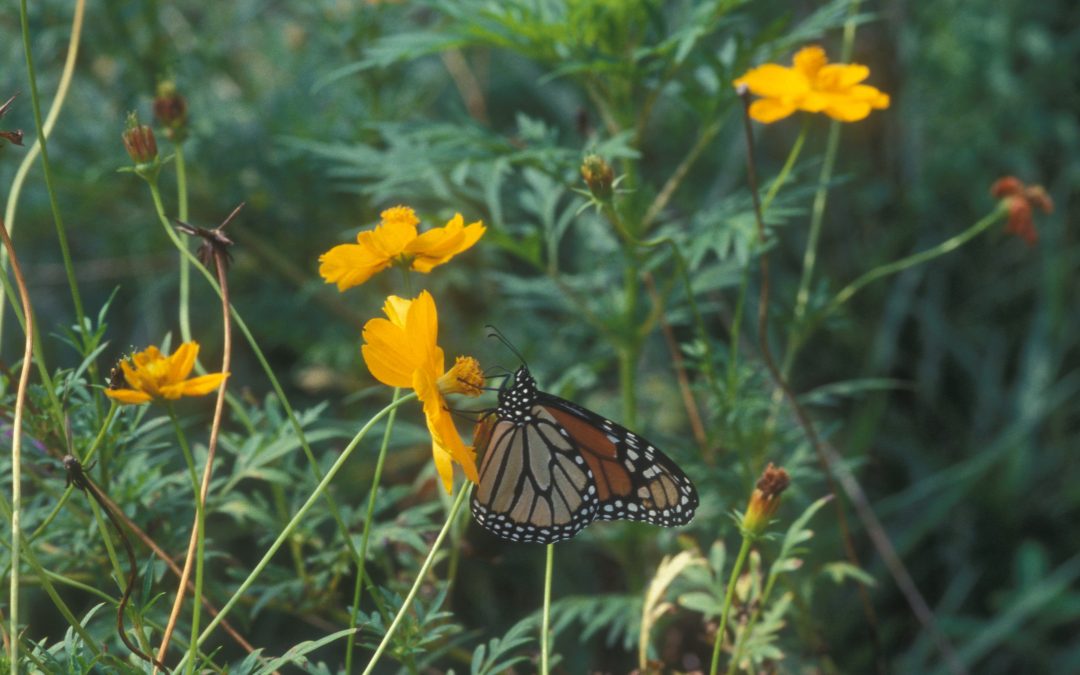
by Danielle S. Williams | Jan 24, 2025
During the summer months, we can’t seem to get away from insects. Whether it’s a fly circling your food, those pesky aphids in your garden, or a mosquito out for blood, they make their presence known. But when winter rolls around and temperatures drop, they seem to disappear. But where do they go?
Unlike humans, insects are exothermic or cold blooded. They cannot regulate their own body temperature and must rely on the heat of the environment. Each insect species has its own developmental threshold, a temperature below which no development takes place. For many insects, that threshold is about 50 degrees Fahrenheit. This means that when temperatures drop below 50 degrees Fahrenheit, consecutively, the insect is not active, and no development is occurring. Typically, the warmer the temperature is (as long as it is above the development threshold), the more insect activity we see.
Insects may also enter a state called diapause, which is similar to hibernation. During diapause, an insect’s metabolism slows dramatically, and the insect stops feeding, growing, or reproducing. This allows the insect to survive through cold winter conditions, conserving energy until temperatures warm up again.

Monarch butterfly. Photo credit: Lyle Buss, UF/IFAS
Another insect survival technique during the winter is migration. Many species of insects migrate to warmer climates to escape the cold. A well-known example of this is with the infamous Monarch butterfly migration. Monarchs migrate south to Mexico to overwinter and survive the cold weather. Some other insects migrate in smaller, less noticeable ways such as moving to different micro-climates. For example, beetle grubs may move down deep within the leaf litter to stay warm. Insects like lady beetles may congregate in large numbers inside homes, barns, or buildings during the winter.
Some insect species can produce glycerol, a type of anti-freeze, that prevents their body from freezing even when temperatures drop below freezing.
While many insects seem to disappear during the winter, they’re actually using their time wisely and although, cooler temperatures may slow down their activity, they won’t necessarily change insect populations drastically. Insects are well adapted for survival, and they are here to stay. They’re just enjoying a break until the warmth of spring brings them back!
For more information on insects, please contact your local UF/IFAS Extension Office.
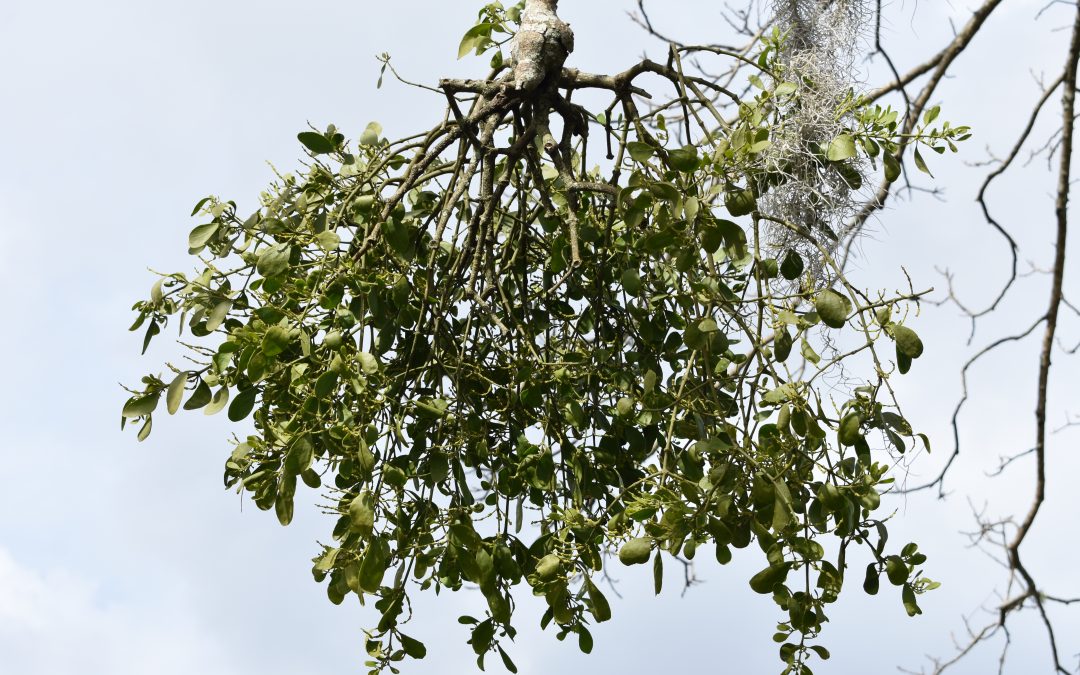
by Danielle S. Williams | Dec 5, 2024
A kiss under the mistletoe…a timeless holiday tradition that we’ve all heard of. If you look around, you’ll be sure to find some growing on the branches of several different species of hardwood trees throughout the Panhandle. This same mistletoe is often harvested and brought inside to add a festive touch to holiday decorations.
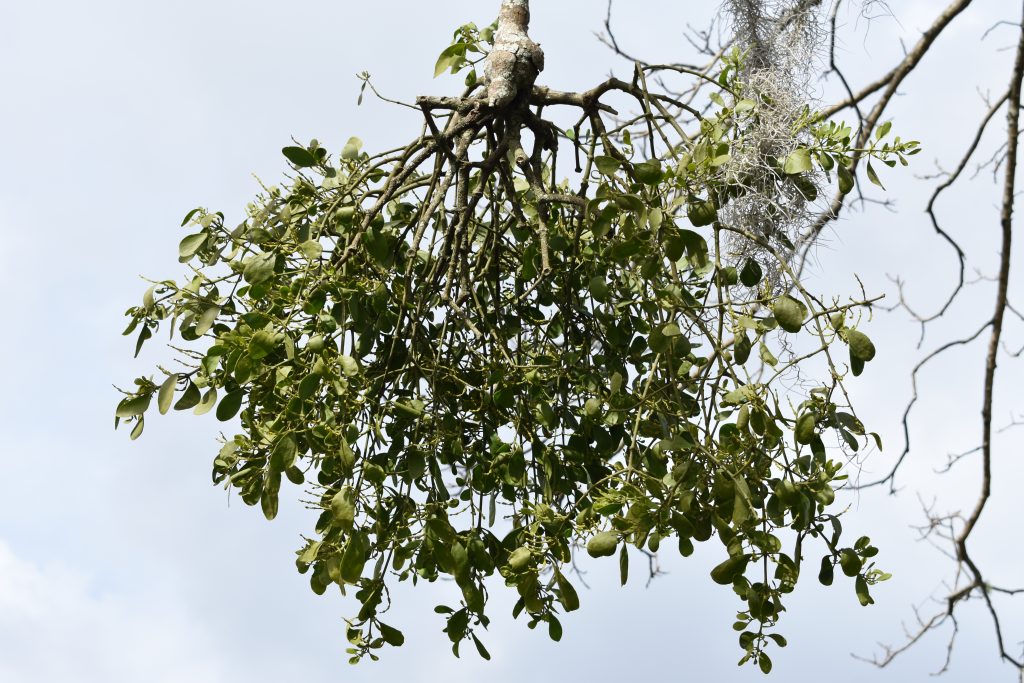
Mistletoe hanging in pecan tree. Photo credit: Danielle Williams.
The species we have here is known as American or oak mistletoe. It only grows in deciduous trees that shed their leaves annually. While mistletoe has over 200 host plants, you’ll find it most commonly in oaks, maples, and pecans. Look for a green, ball shaped mass about 3’ wide in the tops of trees. Each mass is an individual mistletoe plant, and some trees may have a few or many.
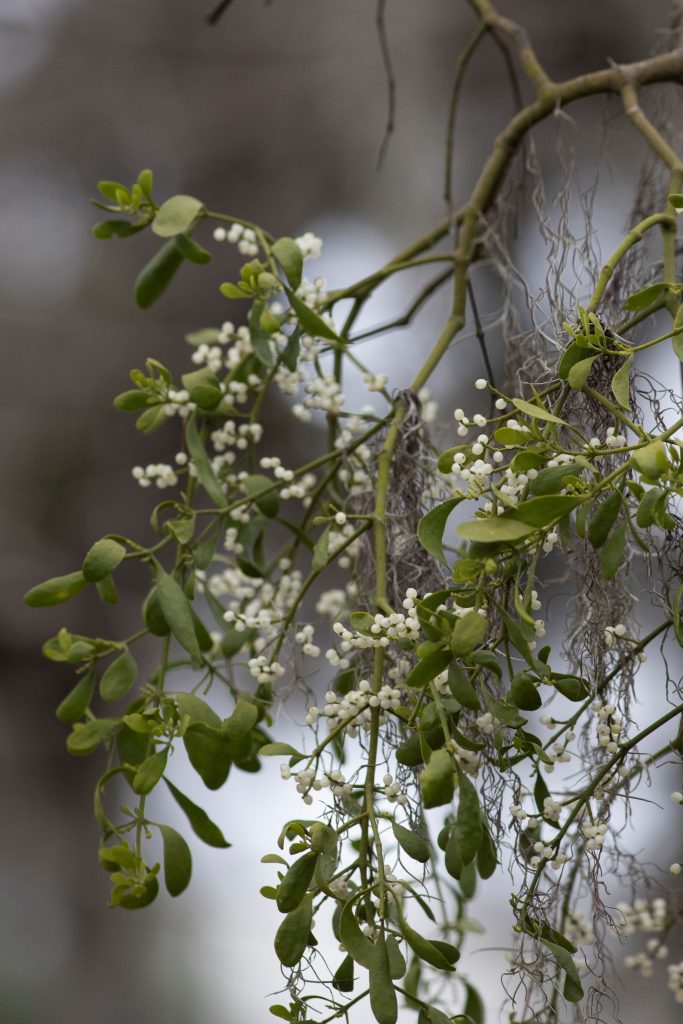
Mistletoe. UF/IFAS Photo by Tyler Jones.
Mistletoe is a small, evergreen shrub with white berries. It is considered a hemi-parasitic plant because it can produce some of its own food through photosynthesis, but it also relies on its host tree for water and nutrients. Most healthy trees can tolerate mistletoe without suffering any significant harm. However, trees that become severely infested with mistletoe can become weakened and decline in health, especially if the tree is already stressed by pests, drought or disease.
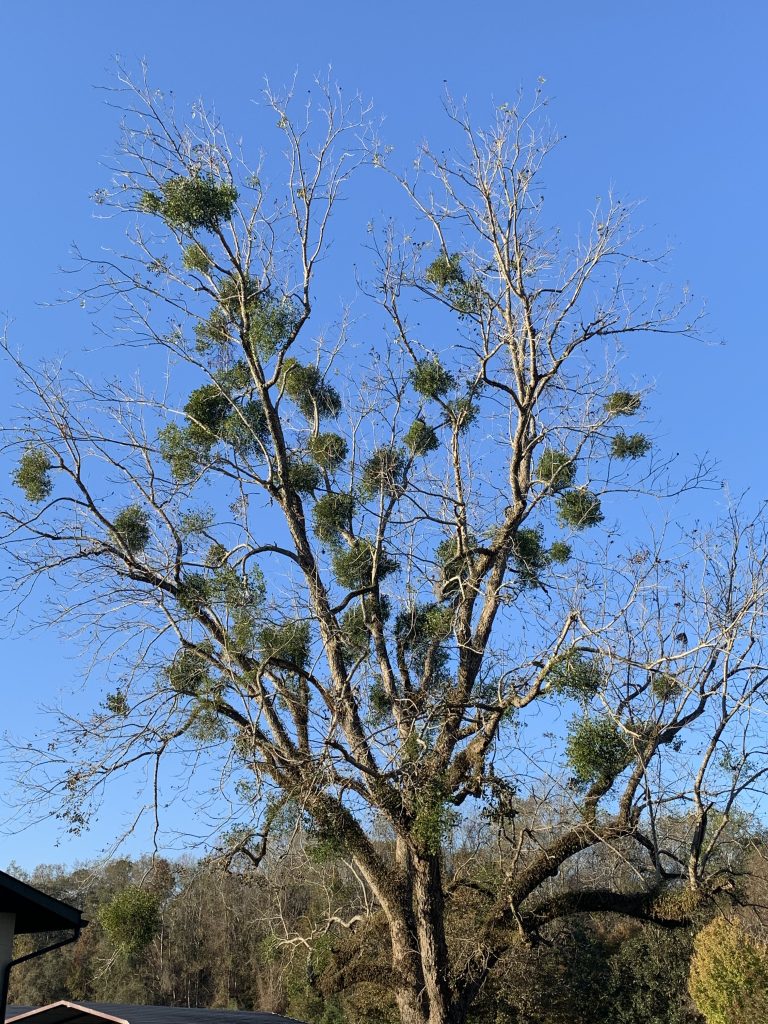
Pecan Tree Infested with Mistletoe. Photo credit: Danielle Williams.
If you have mistletoe growing on trees in your yard, the best way to support the trees is to maintain their overall health through proper watering, fertilization and pest management. If you suspect trees on your property are suffering from mistletoe, you can prune the infected branches. Since mistletoe roots from its host tree, simply cutting it flush with the branch will not kill it. You can remove the roots by pruning at least six inches below the point of attachment.
While some may consider mistletoe to be a nuisance, it does provide ecological benefits. Mistletoe serves as a valuable resource to our wildlife, primarily birds and insects. Oak mistletoe is the only food source for the larvae of the great purple hairstreak butterfly.
If you are considering harvesting mistletoe this winter to use for decoration, be sure to place it carefully. Mistletoe berries and all parts of the plant are poisonous to humans so keep plants and decorations out of the reach of children and pets. For more information on mistletoe, contact your local UF/IFAS Extension Office.
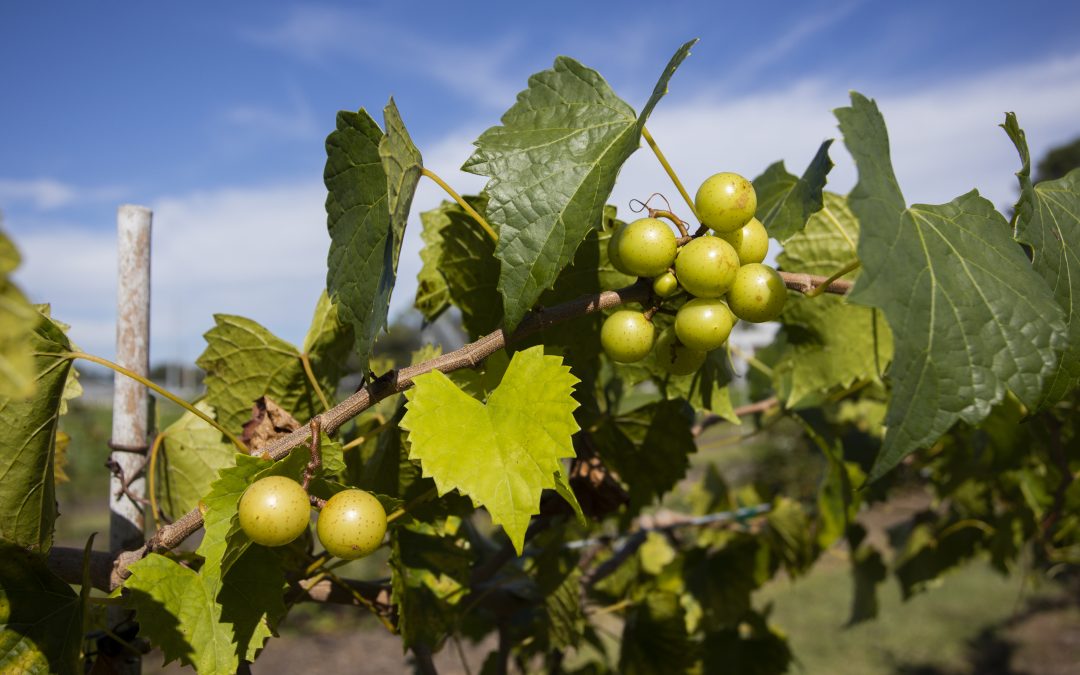
by Danielle S. Williams | Oct 8, 2024
Please join UF/IFAS Extension for the Orchard Crop Diversification Field Day, on Wednesday, October 23rd. This event will be held from 8:30 – 11:30AM Eastern Time, at the UF/IFAS North Florida Research & Education Center (NFREC), located at 155 Research Road, Quincy, Florida.
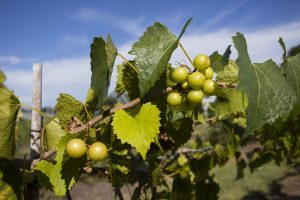
Muscadine grapes growing on a vine. UF/IFAS Photo.
This is a free event aimed at educating commercial farmers, home gardeners, landowners, and industry representatives about some of the potential crop diversification options for North Florida orchards, such as persimmon, blueberry, finger lime, muscadine, pecan, and citrus. Crop diversification is the practice of growing a variety of crops to enhance sustainability, improve soil health, increase biodiversity, and mitigate risks. While there are potential benefits to crop diversification, there are also potential challenges. The field day aims to present attendees with the potential benefits, challenges, and current research associated with the crop options presented.
Attendees will be able to visit the persimmon, pecan, and blackberry plantings at UF/IFAS North Florida Research & Education Center in Quincy. On the tour, attendees will have the opportunity to learn about production practices as well as sample the different persimmon varieties. Light refreshments and lunch will be provided. Space is limited, so please register using the link below or by calling 850-875-7255 to reserve your spot!
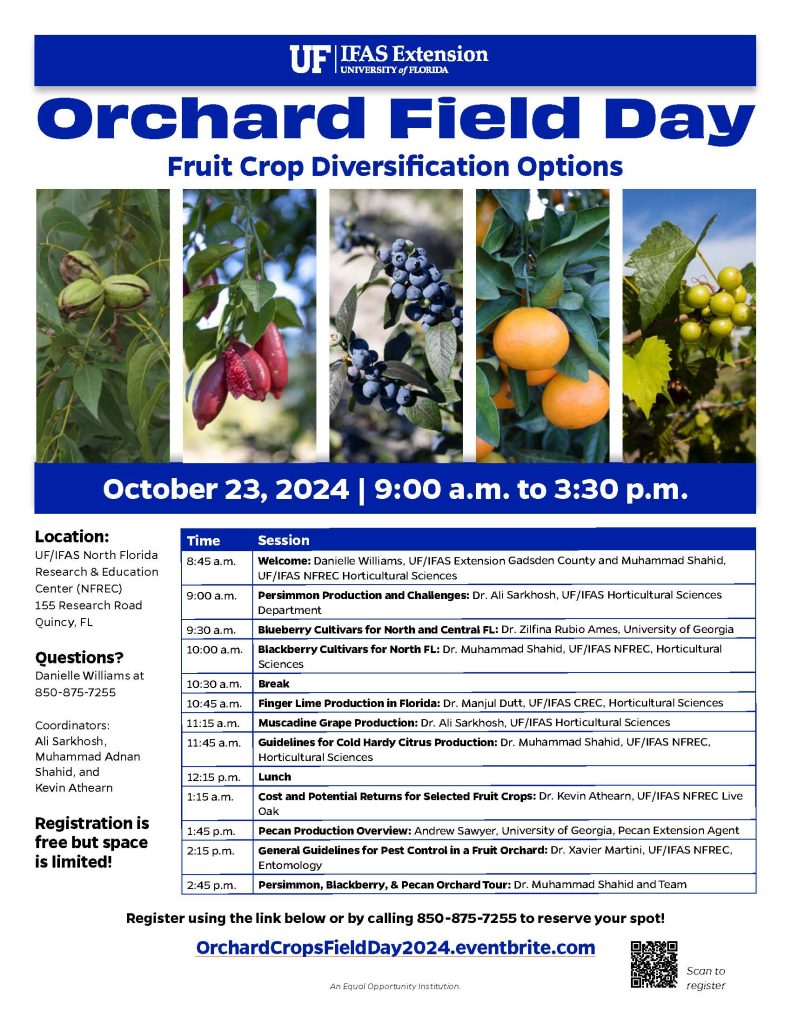
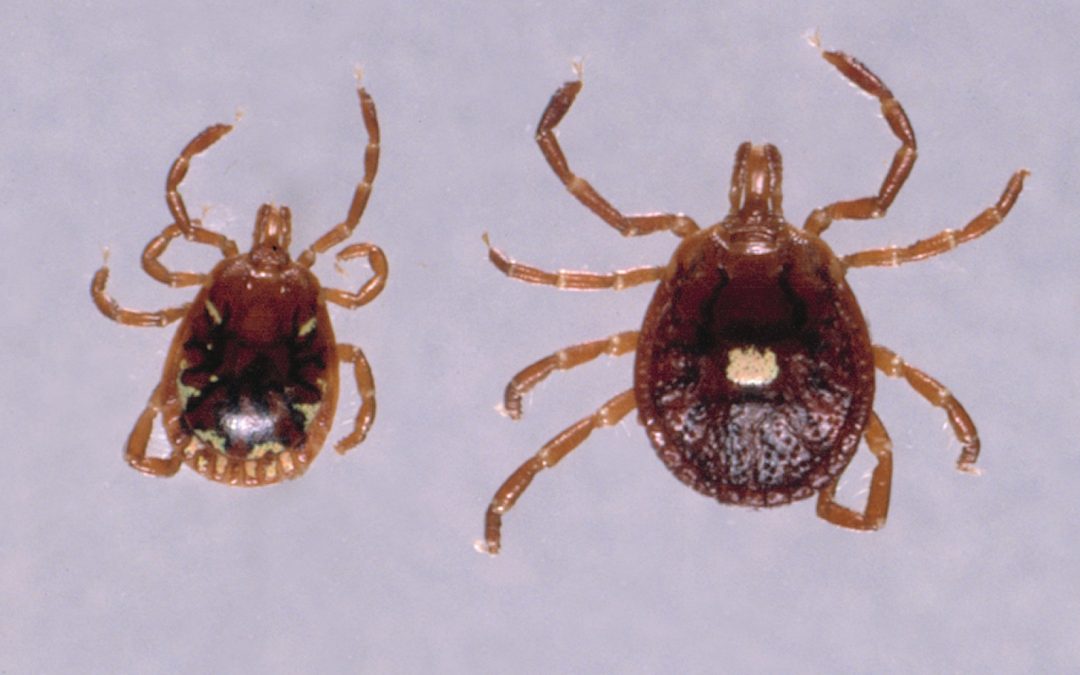
by Danielle S. Williams | Aug 20, 2024
The warm temperatures of summer bring a wide array of pests and one of my least favorites is ticks. If you’ve ever experienced their itchy bite, you know ticks can certainly put a damper on gardening and being outdoors in general. In our area, ticks are present year-round but are the most active during warm weather, from April through September. Understanding ticks, their life cycle, habitat, and the dangers they present is crucial for minimizing the risks they pose to both humans and animals.

Female Black-Legged Deer Tick. Credit: J.F. Butler, UF/IFAS.
Ticks are widely recognized for the transmission of diseases to humans and animals, most notably Lyme disease. Although ticks feed on humans, we are not their preferred blood meal. While there are many species throughout the world, only a few species are able to actually transmit diseases to humans. The black-legged tick, also known as the deer tick, is the main vector for Lyme disease. Although the black-legged tick is not the most prevalent tick in Florida and few cases of Lyme disease have been reported in Florida, it is still important to be aware. Other species that are common in our area are the brown dog tick, the American dog tick, and the lone star tick.

Lone Star Tick, male (left), female (right). Credit: J.F. Butler
Ticks are not insects and are more closely related to spiders. Adult ticks have eight legs. Ticks have four life cycle stages: egg, larva, nymph and adult. All ticks feed on blood during some or all stages on their life. Depending on the species, a female can lay anywhere from 1,000 to 6,500 eggs in her lifetime. When ticks feed, they make a small hole in the skin, attach themselves with their mouthparts, and insert their piercing mouthparts to remove blood.
Research shows that ticks must feed for several hours to transmit disease causing organisms, so quick identification and removal can help reduce tick-borne disease. If you find a tick attached to your skin, remove it as soon as you see it. The best way to remove it is with a pair of tweezers. Grasp on the tick’s mouthparts and pull it straight out with firm pressure. Don’t twist or yank on it too quickly as this can cause some of the tick to remain attached to your skin. You should thoroughly clean the area where the tick was and keep an eye out for any sign of infection. If you become ill after a tick bite, contact your physician.
The best way to prevent your yard from becoming a tick haven is to keep your yard mowed and to remove any leaf litter and brush laying around. These places provide refuge for ticks. Beware that wildlife such as raccoons, skunks, deer, and mice harbor ticks so you may want to discourage them from coming to your yard. You should also regularly check pets who might enter tick infested areas.
While outside, wear long-sleeved shirts and long pants tucked into socks if entering into tick infested areas. Clothing that is light colored make ticks more visible and easier to pick off. You can apply tick repellent to socks and shoes to prevent them from crawling onto clothing. It’s important to inspect yourself frequently while outside or after working in areas suspected of being infested with ticks! For more information on ticks, contact your local UF/IFAS Extension Office.
For more information:














